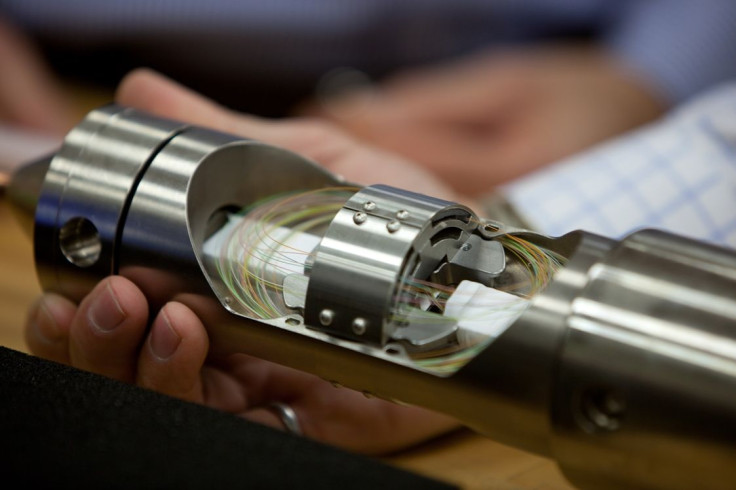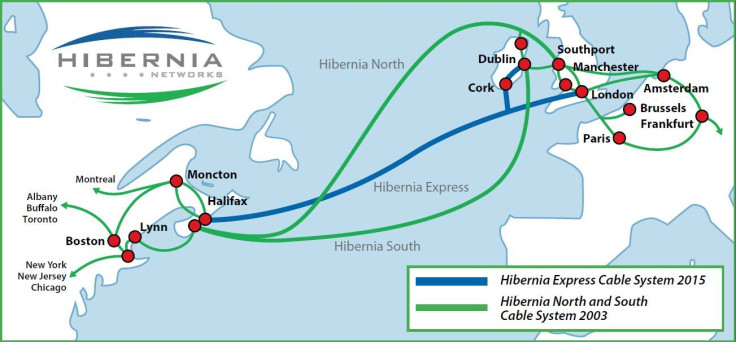Fastest Fiber Optic Cable In the North Atlantic To Light Up With Commercial Traffic

The fastest fiber optic cable in the North Atlantic, known as the Hibernia Express, has sparked to life and will begin carrying commercial data traffic to clients including Microsoft on Saturday. The cable is also the first to be installed along the congested undersea corridor between London and New York in more than a decade. Now that it’s finished, financial markets in both locations will be able to trade with one another at a faster speed than ever before.
Hibernia Networks, the company behind the $300 million project, announced the cable’s completion on Tuesday but was unable to reveal its official speed until testing is complete. However, CEO Bjarni Thorvardarson says he anticipates the 2,800-mile cable will deliver information from one side of the ocean to the other in well under 59.9 milliseconds. That's at least five milliseconds faster than the current speediest cable.
Once operational, the cable will serve four main customer groups: financial markets, media companies that stream live events such as soccer games, Web-centric firms such as social media companies that host massive amounts of content and major telecom providers that sell capacity to other customers. Analysts at the research firm TeleGeorgraphy have projected that demand for bandwidth across the North Atlantic will increase by 40 percent a year for at least the next six years due to growth in cloud computing and data storage.
"This cable will prevent nothing less than a capacity crunch somewhere down the line,” Thorvardarson says. Others have questioned whether the project is truly necessary, as companies' ability to transfer more information through an ever smaller amount of data also increases.

Part of the cable juts off to Cork, Ireland – where major content producers such as Apple, Microsoft and Google have opened data centers in recent years. Thorvardarson says he expects the new connection to further boost the profile of Cork and the surrounding area as appealing places for data centers or for large companies to situate their headquarters, coaxed by the cable's tranfer rate and girth.
The cable contains six fiber pairs – one that is primed to deliver the greatest possible speeds and four others that serve primarily to deliver capacity for massive data transfers. Thorvardarson says the project’s engineers shaved precious milliseconds from the transfer speed by laying the cable on the ocean’s floor in a way that precisely aligns with the curvature of the Earth – along what’s called the “great circle route” which marks the shortest possible distance between landing points in London and Halifax, Nova Scotia. Data that reaches Halifax on the western end will then be carried over land to New York.
The cable will use the same data security protections that have been deployed on other products by Hibernia Networks, which the company, headquartered in Summit, New Jersey, says have proven more than sufficient for customers’ interests.
© Copyright IBTimes 2024. All rights reserved.












